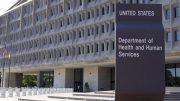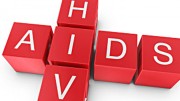
Secretary of State Hillary Rodham Clinton highlighted an additional $25 million the U.S. government recently committed to help Uganda eliminate mother-to-child transmission of HIV.
Photo: U.S. Department of State
Impressive Assistance to help curb mother-to-child HIV transmission
United States — Secretary of State Hillary Rodham Clinton, joined by Uganda’s Minister of Health Dr. Christine Ondoa, on August 3, 2012, in Kampala, Uganda, highlighted the additional $25 million the U.S. government recently committed to help Uganda eliminate mother-to-child transmission of HIV.
Through the U.S. President’s Emergency Plan for AIDS Relief (PEPFAR), the U.S. government has invested more than $1 billion in the global effort to eliminate mother-to-child transmission of HIV. In the first half of this fiscal year, U.S. efforts to prevent mother-to-child transmission (PMTCT) reached more than 370,000 women around the world and are on track to reach an additional 1.5 million women by next year. The U.S. government seeks to ensure that HIV-positive pregnant women receive the treatment they need to protect themselves their partners, and prevent their babies becoming HIV positive.
With a population of 32 million and the world’s second-highest fertility rate, Uganda faces growing demand for health services. Uganda is among the top-five highest burden countries, contributing to seven percent of the global unmet need for PMTCT services, with more than 100,000 HIV-exposed babies born each year. HIV prevalence in Uganda rose from 6.4 percent in 2005 to 7.3 percent in 2011, with more than 120,000 new infections each year.
Key challenges related to the implementation of PMTCT in Uganda include:
- Low coverage and uptake of core maternal and child health services;
- Late start of HIV prophylaxis among pregnant women; and
- High fertility rate of 6.2 births per woman.
Despite these challenges, Uganda has expanded the scope and coverage of its PMTCT services over the past year. As of June 2011, PMTCT services were available in 35 percent of all health facilities. The U.S. government is committed to working in partnership with the Ministry of Health to eliminate mother-to-child transmission in Uganda and realize the dream of an AIDS-free generation.







